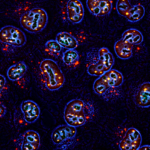Lien vers Pubmed [PMID] – 14500761
Mol. Endocrinol. 2003 Dec;17(12):2529-42
Molecular mechanisms underlying mineralocorticoid receptor (MR)-mediated gene expression are not fully understood but seem to largely depend upon interactions with specific coregulators. To identify novel human MR (hMR) molecular partners, yeast two-hybrid screenings performed using the N-terminal domain as bait, allowed us to isolate protein inhibitor of activated signal transducer and activator of transcription (PIAS)1 and PIASxbeta, described as SUMO (small ubiquitin-related modifier) E3-ligases. Specific interaction between PIAS1 and hMR was confirmed by glutathione-S-transferase pull-down experiments and N-terminal subdomains responsible for physical contacts were delineated. Transient transfections demonstrated that PIAS1 is a corepressor of aldosterone-activated MR transactivation but has no significant effect on human glucocorticoid receptor transactivation. The agonist or antagonist nature of the bound ligand also determines PIAS1 corepressive action. We provided evidence that PIAS1 conjugated SUMO-1 to hMR both in vitro and in vivo. Deciphering the unique sumoylation pattern of hMR, which possesses five consensus SUMO-1 binding sites, by combinatorial lysine substitutions, revealed a major impact of sumoylation on hMR properties. Using a murine mammary tumor virus promoter, PIAS1 action was independent of sumoylation whereas with glucocorticoid response element promoter, PIAS1 corepressive action depended on hMR sumoylation status. Taken together, our results identify a novel function for PIAS1 which interacts with the N-terminal domain of hMR and represses its ligand-dependent transcriptional activity, at least in part, through SUMO modifications.

